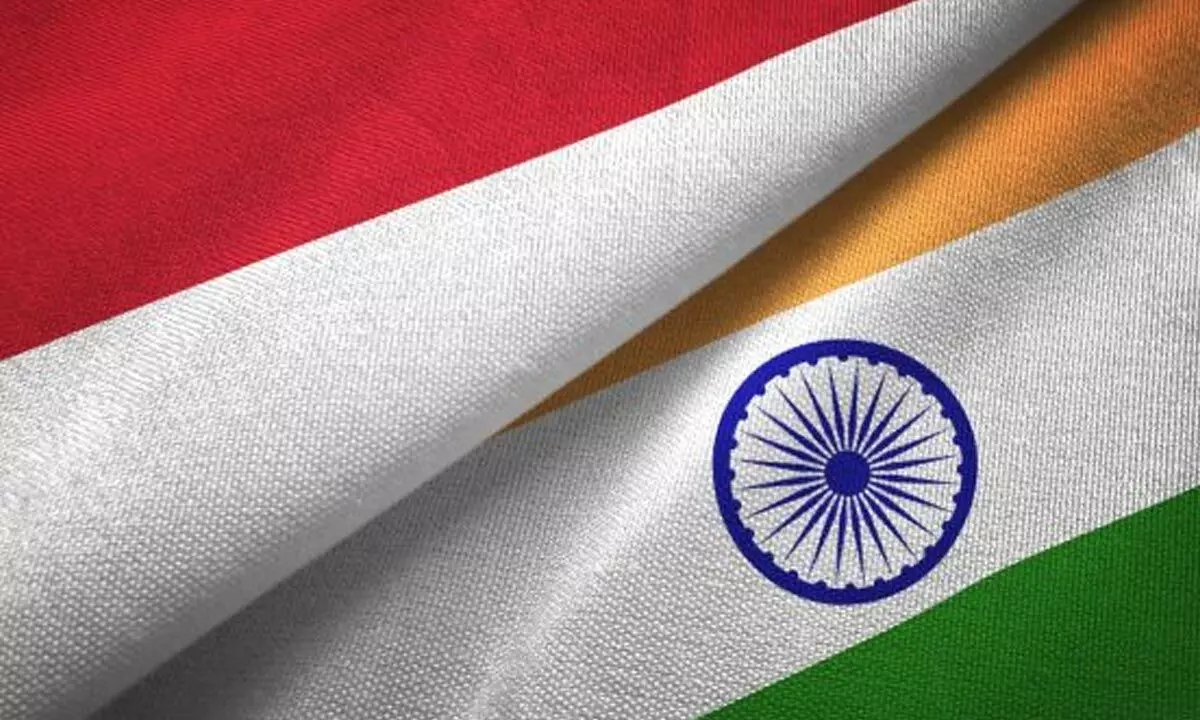India, Indonesia set to deepen historical ties

Indonesia, comprising thousands of islands, is the largest country in Southeast Asia, both in terms of land area, population and rich cultural heritage. The name itself connotes historical trade and cultural connections to India. In Greek, ‘nesos’ means ‘island’, thus defining Indonesia as ‘Indian Islands’ or ‘Islands of India.’ And it is not thrust upon the island nation, rather adopted during the nationalist movement waged against the colonial rule in the early 20th century. The distance between the Andaman and Nicobar Islands and the northern tip of Sumatra is only 90 nautical miles.
Religious (both Hinduism and Buddhism) and cultural affinities between India and Indonesia have been celebrated for over a millennium in arts, music, architecture and literature, as can be seen in majestic temples of Borobudur and Prambanan, contributing to a mutually close understanding and respect between the two nations. Festivals such as Diwali are celebrated with a blend of local traditions.
As such, it gives India immense satisfaction and delight that the President of Indonesia, Prabowo Subianto, has accepted to grace our upcoming 76th Republic Day celebrations as the chief guest. Incidentally, it was the President of Indonesia, Sukarno, who participated as the chief guest at the first Indian Republic Day Parade held on 26 January 1950.
The relations between the two nations were disrupted by the colonial rulers of India and Indonesia, i.e., British and Dutch respectively. The ties were revived on Indonesia gaining independence on 17 August 1945. Both established diplomatic relations on 16 April 1949. A year later, the first President of Indonesia visited the independent India to attend its first R-Day Parade. The strong bonds between the two nations was also a factor for the birth of the NAM (Non-Aligned Movement) at the Bandung Conference in 1955. President Sukarno was one of the five founding members of NAM, along with Jawaharlal Nehru of India, and Josip Broz Tito of Yugoslavia, Gamal Abdul Nasser of Egypt and Kwame Nkrumah of Ghana.
The relations have since been cordial. In 2013, Dr Manmohan Singh and President Susilo Bambang Yudhoyono laid foundations for a strategic engagement in trade, science and technology, defence and security. Narendra Modi took it a step further and inked “Shared Vision of Maritime Cooperation in the Indo Pacific” agreement in 2018.
As of 2023, India and Indonesia saw a total trade of around $ 38.84 billion, making Indonesia India’s largest trading partner in the ASEAN region. Both aim to reach US$ 50 billion trade by 2025. Growing proximity of both nations can be seen in their togetherness in G-20, E7, BRICS, and at the UN. In June 2024, as President-elect, Prabowo Subianto during a talk with Indian PM expressed keenness in comprehensive strategic partnership with India. In recent years, China’s assertiveness and expansionism seem to have spurred Indonesia to seek stronger defence modernisation and thus its keen interest in India’s BrahMos Missiles.
Credit must be given to India’s diplomacy as reports say Subianto reportedly decided to put off his travel toPakistan, planned immediately after his trip to India, taking notice of India’s displeasure to club Pakistan with India visit, as if both are equal allies. Meanwhile India is readying a $450 million loan to Indonesia to purchase BrahMos missiles. Jakarta is concerned by Chinese claim over Natuna Islands in its waters. Like New Delhi, it exercises strategic autonomy and balances economic and political interests. After meeting Prabowo Subianto at the G20 Summit in Rio de Janeiro in November last, Modi looks forward to deepening the ties further, and also exchanging views on shared challenges and opportunities. They may announce a common vision for a free and open Indo-Pacific where China is bullying its neighbours.


